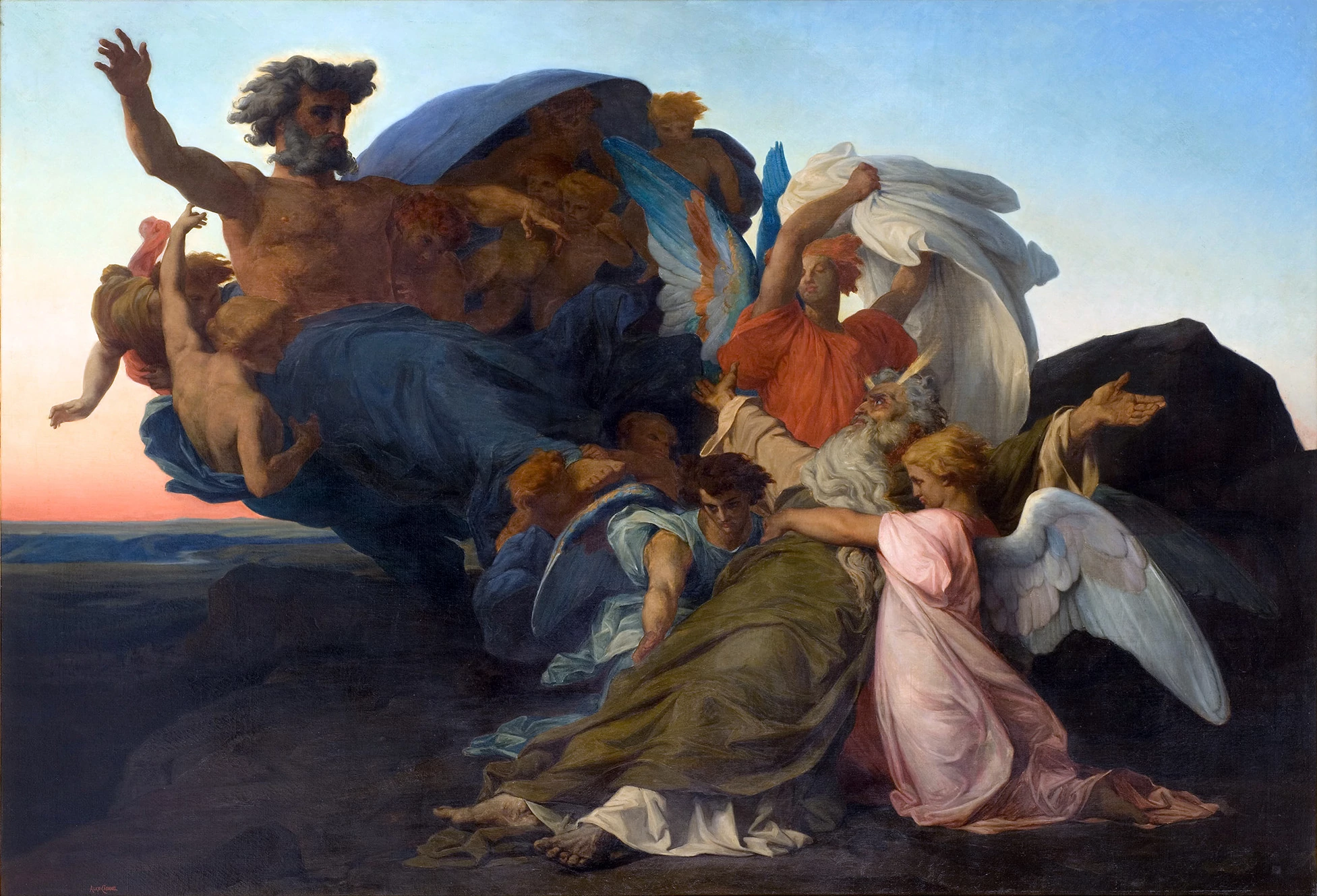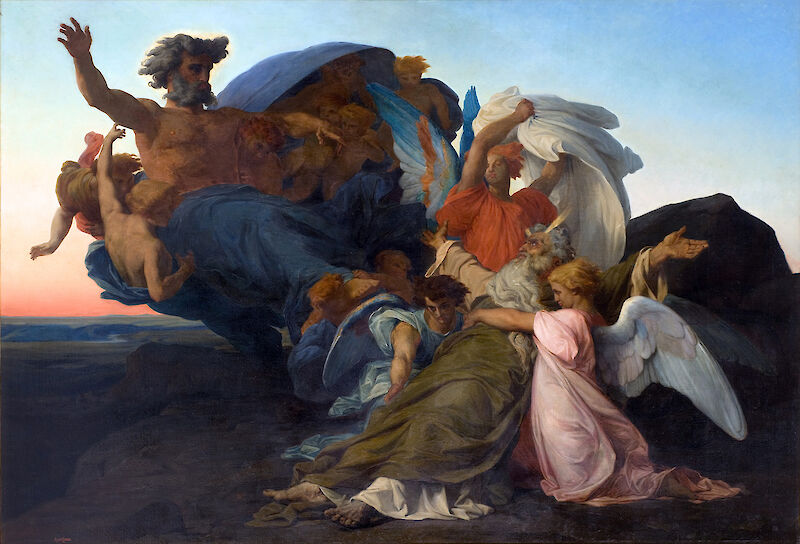


“I have imposed upon myself a large, very difficult, formidable task, since I seek to represent the image of the Eternal Master of the sky and the earth—to represent God—and next to Him, one of His most sublime creatures, deified in some way by His contact.”
Alexandre Cabanel is describing his painting The Death of Moses in a letter to his brother, and he sounds uncharacteristically nervous. Cabanel was only 28 at the time but already an enormously successful painter, having won the Prix de Rome in 1945 and spent the following five years working under the patronage of the Medici family in Italy. Maybe it was the size of the canvas—more than 9ft tall and almost 13ft wide, making the figures bigger than life size. Or his inspiration gave him a case of the nerves—God’s hair, split beard and raised arms reflect a distinct homage to Raphael’s The Vision of Ezekiel, which Cabanel likely saw at the Pitti Palace while waiting out the 1848 revolution in Rome. Or it could be that the painting carried the extra expectation of being Cabanel’s dernier envoi, or last work, sent back to Paris to showcase his artistic development during his time in Rome.
Whatever Cabanel’s internal state, we know from his sketches that he labored over this giant work, and the result is a grand but odd synthesis of references and traditions. Unlike the high-Renaissance symmetry and clearly delineated figures of Raphael’s Ezekiel, The Death of Moses is a swirling mass of figures draped across an aggressively diagonal composition. The dramatic arches of divine clothing are none-too-subtle a reference to Michelangelo’s famous ‘creation of Man’ from the Sistine Chapel, but God’s muscular form isn't lit from above, it’s backlit—throwing him and his attending angels into shadow.
Critics were unkind to Cabanel’s Death of Moses. They called his reference to Michelangelo too literal, his figures too enmeshed, his composition muddy. But to the contemporary eye, these failings are precisely what make this artwork interesting. They reveal the artist’s struggle to live up to his reputation, stretched between a desire for personal style and strict adherence to tradition.
...
Got questions, comments or corrections about The Death of Moses? Join the conversation in our Discord, and if you enjoy content like this, consider becoming a member for exclusive essays, downloadables, and discounts in the Obelisk Store.
